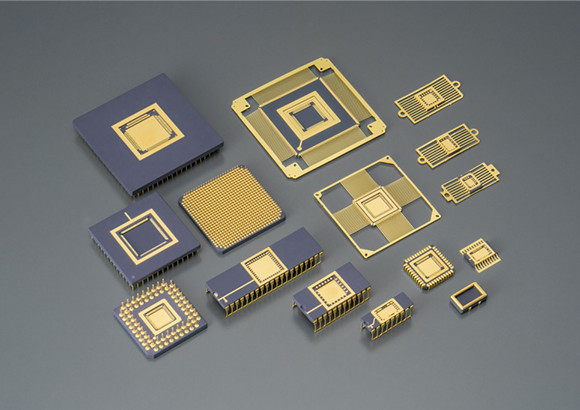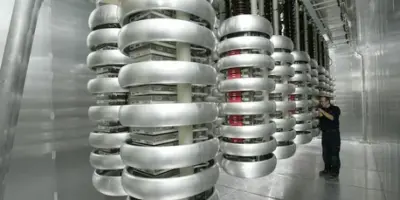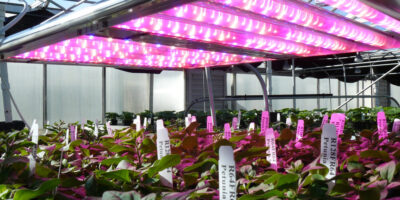The global HTCC and LTCC Market size is expected to be worth around USD 4.6 billion by 2033, from USD 3.2 billion in 2023, growing at a CAGR of 3.7% during the forecast period from 2023 to 2033
LTCC and HTCC Market Overview
Low-Temperature Co-fired Ceramics (LTCC) and High-Temperature Co-fired Ceramics (HTCC) are pivotal technologies in the ceramics market, offering essential solutions for the miniaturization and reliability of electronic components. These technologies are used extensively in various sectors including telecommunications, automotive, aerospace, and consumer electronics due to their unique advantages in high-frequency performance, thermal management, and integration capabilities.
LTCC and HTCC Market Overview
Market Size and Segmentation:
- Global Reach: The LTCC and HTCC markets are witnessing significant growth globally, driven by increasing demand for compact, efficient, and reliable electronic components. The Asia-Pacific region, particularly China and Japan, is leading in manufacturing and application of these technologies due to the robust electronics industry.
- Applications: Key applications include RF (radio frequency) modules, sensors, automotive electronics, and high-frequency communication devices. LTCC is favored for applications requiring high integration and miniaturization, while HTCC is preferred in environments requiring higher temperature tolerance and durability.
Market Dynamics:
- Growth Drivers: The rise in demand for high-frequency and high-reliability electronics, advancements in telecommunications infrastructure (especially 5G), and the proliferation of IoT devices are major drivers for the LTCC and HTCC markets.
- Technological Advancements: Continuous innovations in material science and manufacturing processes are enhancing the performance and application range of LTCC and HTCC substrates.
- Challenges: High manufacturing costs and the need for specialized production facilities are challenges that impact the widespread adoption of these technologies.
Innovations in LTCC and HTCC
LTCC Innovations:
- Advanced Material Compositions: New ceramic and glass-ceramic composites are being developed to improve the dielectric properties, mechanical strength, and thermal stability of LTCC substrates.
- Integration Techniques: Innovations in multi-layer integration allow for higher component density and improved electrical performance, facilitating the creation of compact and complex electronic modules.
- Eco-Friendly Processes: Development of lead-free and environmentally friendly LTCC materials to comply with regulatory standards and reduce environmental impact.
HTCC Innovations:
- High-Temperature Materials: Advances in refractory metals and ceramic compositions enhance the performance of HTCC substrates in extreme temperatures and harsh environments.
- Improved Conductor Systems: Innovations in metallization processes are improving the conductivity and reliability of HTCC substrates, making them more suitable for high-power and high-frequency applications.
- Additive Manufacturing: Adoption of additive manufacturing techniques for HTCC is enabling more precise and complex designs, reducing production times and costs.
LTCC in Wireless Communication Devices
Applications and Benefits:
- RF Modules: LTCC is widely used in the production of RF modules for wireless communication devices, including smartphones, Wi-Fi routers, and satellite communication systems. The material’s excellent high-frequency performance and low signal loss make it ideal for these applications.
- Antenna Systems: LTCC technology enables the development of compact and integrated antenna systems that provide superior performance in small form factors.
- Filter and Coupler Components: LTCC’s ability to integrate passive components such as filters and couplers directly into the substrate reduces the need for discrete components, enhancing the overall performance and reducing size and weight.
Key Advantages:
- Miniaturization: LTCC allows for the creation of highly compact and integrated devices by embedding passive components and interconnects within the ceramic layers.
- Thermal Management: LTCC’s thermal properties provide effective heat dissipation, essential for maintaining performance in high-power wireless communication systems.
LTCC in IoT and Sensor Technologies
Applications and Benefits:
- Sensor Modules: LTCC is used in various sensor modules for IoT applications, including temperature sensors, pressure sensors, and environmental sensors. Its ability to integrate multiple sensing elements and circuits in a compact form factor is crucial for IoT devices.
- Wireless Connectivity: LTCC substrates are integral in the development of modules that facilitate wireless connectivity in IoT devices, including Bluetooth, Zigbee, and other communication protocols.
- Wearable Electronics: LTCC’s durability and miniaturization capabilities make it suitable for wearable electronics, where compact size and reliable performance are critical.
Key Advantages:
- Integration Capabilities: LTCC technology enables the integration of sensors, signal processing, and communication components into a single module, enhancing functionality and reducing assembly complexity.
- Reliability: The robustness of LTCC substrates ensures reliable operation in various environments, making them ideal for diverse IoT applications.
Challenges and Opportunities
Challenges:
- High Manufacturing Costs: The production of LTCC and HTCC substrates involves sophisticated materials and processes, leading to higher manufacturing costs compared to traditional electronic substrates.
- Technical Complexity: The design and fabrication of LTCC and HTCC components require specialized knowledge and precision, presenting barriers to entry for new manufacturers.
- Market Competition: Intense competition from alternative technologies such as PCB (Printed Circuit Board) and other ceramic substrates can impact market growth.
Opportunities:
- Growing 5G Infrastructure: The expansion of 5G networks presents significant opportunities for LTCC and HTCC technologies in providing advanced RF components and modules.
- Emerging IoT Markets: The proliferation of IoT devices across various industries, including healthcare, automotive, and smart home, drives demand for compact, reliable, and integrated solutions offered by LTCC and HTCC.
- Sustainability Trends: Increasing focus on environmentally sustainable technologies opens up opportunities for the development of eco-friendly LTCC and HTCC materials and processes.
Receive the FREE Sample Report of LTCC and HTCC Market Research Insights @ https://stringentdatalytics.com/sample-request/ltcc-and-htcc-market/9671/
Market Segmentations:
Global LTCC and HTCC Market: By Company
• Murata
• TDK Corporation
• Kyocera
• Bosch
• ACX Corp
• Walsin Technology
• Taiyo Yuden
• Yageo
• KOA Corporation
• Samsung Electro-Mechanics
• NEO Tech
• Chilisin
• Yokowo
• Mini-Circuits
• Adamant Namiki
• Hitachi Metals
• Shenzhen Sunlord
• Microgate
• MST
• NTK/NGK
• NIKKO
• NeoCM
• Elit Fine Ceramics
• API Technologies (CMAC)
• CETC 43rd Institute
• IMST GmbH
• Selmic
• BDStar (Glead)
• Fenghua Advanced
• YanChuang Optoelectronic
• Kyocera
• Maruwa
• NGK/NTK
• Egide
• NEO Tech
• AdTech Ceramics
• Ametek
• Electronic Products, Inc. (EPI)
• SoarTech
• CETC 43 (Shengda Electronics)
• Jiangsu Yixing Electronics
• Chaozhou Three-Circle (Group)
• Hebei Sinopack Electronic Tech & CETC 13
• Beijing BDStar Navigation (Glead)
• Fujian Minhang Electronics
• RF Materials (METALLIFE)
• CETC 55
• Qingdao Kerry Electronics
• Hebei Dingci Electronic
• Shanghai Xintao Weixing Materials
Global LTCC and HTCC Market: By Type
• LTCC
• HTCC
Global LTCC and HTCC Market: By Application
• Consumer Electronics
• Aerospace and Military
• Automobile Electronics
• Communication Package
• Industrial
• Others
Regional Analysis of Global LTCC and HTCC Market
All the regional segmentation has been studied based on recent and future trends, and the market is forecasted throughout the prediction period. The countries covered in the regional analysis of the Global LTCC and HTCC market report are U.S., Canada, and Mexico in North America, Germany, France, U.K., Russia, Italy, Spain, Turkey, Netherlands, Switzerland, Belgium, and Rest of Europe in Europe, Singapore, Malaysia, Australia, Thailand, Indonesia, Philippines, China, Japan, India, South Korea, Rest of Asia-Pacific (APAC) in the Asia-Pacific (APAC), Saudi Arabia, U.A.E, South Africa, Egypt, Israel, Rest of Middle East and Africa (MEA) as a part of Middle East and Africa (MEA), and Argentina, Brazil, and Rest of South America as part of South America.
Click to Purchase LTCC and HTCC Market Research Report @ https://stringentdatalytics.com/purchase/ltcc-and-htcc-market/9671/
HTCC Substrate Reliability and Performance
Key Aspects of Reliability:
- Thermal Stability: HTCC substrates offer superior thermal stability, allowing them to perform reliably in high-temperature applications such as power electronics and aerospace systems.
- Mechanical Strength: The robust ceramic composition of HTCC substrates provides high mechanical strength, essential for maintaining performance under mechanical stress and vibration.
- Chemical Resistance: HTCC substrates are resistant to chemical corrosion, making them suitable for use in harsh environments, including industrial and automotive applications.
Performance Enhancements:
- Improved Metallization: Advances in metallization techniques enhance the electrical conductivity and adhesion of conductive layers on HTCC substrates, improving their performance in high-frequency and high-power applications.
- Precision Manufacturing: The adoption of precision manufacturing techniques, including laser machining and additive processes, allows for the production of more complex and reliable HTCC components.
Reliability Testing:
- Environmental Testing: HTCC substrates undergo rigorous environmental testing, including thermal cycling, vibration, and moisture resistance, to ensure they meet the reliability requirements for their intended applications.
- Performance Metrics: Key performance metrics for HTCC substrates include thermal conductivity, dielectric strength, and mechanical durability, which are critical for assessing their suitability for various applications.
LTCC and HTCC Market: Manufacturing Processes
Low-Temperature Co-fired Ceramics (LTCC) and High-Temperature Co-fired Ceramics (HTCC) are critical technologies used in producing complex electronic components with excellent thermal and electrical properties. The manufacturing processes for these ceramics involve sophisticated techniques to achieve the desired performance characteristics, reliability, and integration required for modern electronic applications.
LTCC Manufacturing Processes
LTCC technology involves firing ceramics at temperatures below 900°C, allowing the integration of a wide range of metallizations and components.
1. Raw Material Preparation
- Ceramic Powders: High-purity ceramic powders such as alumina or glass-ceramic composites are used as the base material.
- Binder and Solvent Addition: Powders are mixed with organic binders and solvents to create a homogenous slurry. This mixture facilitates the subsequent tape casting process.
2. Tape Casting
- Casting: The slurry is cast onto a moving carrier belt or a flat surface to form thin ceramic tapes or sheets. The thickness of these tapes can be precisely controlled.
- Drying: The cast tapes are dried to remove solvents, resulting in flexible ceramic sheets.
3. Via Formation and Screen Printing
- Via Drilling: Vias (vertical interconnections) are mechanically or laser-drilled into the dried tapes. These vias will later be filled with conductive material to establish electrical connections between layers.
- Screen Printing: Conductive pastes (typically silver, gold, or copper) are screen-printed onto the ceramic tapes to create circuit patterns and fill vias. Additional layers can include resistors, capacitors, and other passive components integrated directly into the tape.
4. Lamination
- Stacking: Multiple ceramic tapes with printed circuit patterns are aligned and stacked to form a multilayer structure.
- Pressing: The stack is pressed together under controlled pressure and temperature to ensure proper adhesion between layers and to remove air pockets.
5. Co-firing
- Low-Temperature Firing: The laminated stack is fired at temperatures ranging from 850°C to 900°C. This process sinters the ceramic layers together and consolidates the metallization, forming a solid, co-fired ceramic substrate.
6. Post-Firing Processes
- Inspection and Testing: The fired LTCC substrates undergo thorough inspection and electrical testing to ensure they meet quality standards.
- Final Assembly: Additional components such as connectors or housings may be attached to the LTCC substrates in this stage.
7. Packaging and Shipping
- Encapsulation: The finished LTCC substrates may be encapsulated or coated for additional protection, depending on their intended application.
- Shipping: The final products are packaged and shipped to customers or further integrated into electronic systems.
HTCC Manufacturing Processes
HTCC technology involves firing ceramics at temperatures typically above 1300°C, which allows the use of high-temperature resistant materials but requires more robust manufacturing processes.
1. Raw Material Preparation
- High-Temperature Powders: Powders such as alumina or zirconia are used for HTCC. These materials can withstand higher sintering temperatures.
- Binder and Solvent Mixture: Similar to LTCC, the powders are mixed with binders and solvents to produce a slurry for tape casting.
2. Tape Casting
- Casting and Drying: The slurry is cast to form ceramic tapes and dried to produce flexible sheets.
3. Via Formation and Metallization
- Via Drilling: Vias are created in the tapes using mechanical or laser techniques. The higher sintering temperatures allow the use of refractory metals for via filling.
- Metallization: Conductive pastes, often made from materials such as tungsten or molybdenum, are screen-printed to form the circuit patterns. These metals can withstand the high firing temperatures used in HTCC.
4. Lamination
- Stacking and Pressing: The tapes with printed patterns are stacked and laminated under high pressure and controlled temperature to form a solid multilayer structure.
5. High-Temperature Co-firing
- High-Temperature Firing: The laminated stack is sintered at temperatures typically between 1350°C and 1600°C. This step solidifies the ceramic and metal layers, forming a strong, co-fired ceramic substrate.
6. Post-Firing Processes
- Inspection and Testing: The HTCC substrates are inspected for defects and tested for electrical performance to ensure they meet the necessary specifications.
- Secondary Processing: Additional machining, trimming, or finishing processes may be required to meet precise dimensional and performance requirements.
7. Packaging and Shipping
- Protective Coatings: HTCC substrates might be coated with protective materials to enhance durability and performance in harsh environments.
- Final Packaging: The finished HTCC products are packaged and prepared for shipment to customers or further assembly into electronic devices.
Comparative Analysis: LTCC vs. HTCC Manufacturing
Temperature Tolerance:
- LTCC: Sintered at lower temperatures (<900°C), allowing the use of a broader range of metals and components. Suitable for applications requiring integration and miniaturization.
- HTCC: Sintered at higher temperatures (>1300°C), using refractory metals that can withstand extreme conditions. Ideal for high-temperature and high-power applications.
Material Compatibility:
- LTCC: Compatible with a variety of metallizations and materials that may not withstand high temperatures, providing flexibility in component integration.
- HTCC: Limited to metals and materials that can endure high firing temperatures, focusing on applications where thermal stability is critical.
Process Complexity:
- LTCC: Involves more stages of via filling and screen printing due to the need for complex circuit patterns and integrated components.
- HTCC: Requires robust processing techniques and materials capable of withstanding higher sintering temperatures, leading to a potentially simpler but more demanding process.
Applications:
- LTCC: Preferred in RF components, sensors, and devices where compactness and integration are key.
- HTCC: Used in high-temperature environments, aerospace, automotive electronics, and high-power applications where durability and thermal performance are paramount.
About Stringent Datalytics
Stringent Datalytics offers both custom and syndicated market research reports. Custom market research reports are tailored to a specific client’s needs and requirements. These reports provide unique insights into a particular industry or market segment and can help businesses make informed decisions about their strategies and operations.
Syndicated market research reports, on the other hand, are pre-existing reports that are available for purchase by multiple clients. These reports are often produced on a regular basis, such as annually or quarterly, and cover a broad range of industries and market segments. Syndicated reports provide clients with insights into industry trends, market sizes, and competitive landscapes. By offering both custom and syndicated reports, Stringent Datalytics can provide clients with a range of market research solutions that can be customized to their specific needs.
Reach US
Stringent Datalytics
+1 346 666 6655
Social Channels:
Linkedin | Facebook | Twitter | YouTube




Leave a Reply